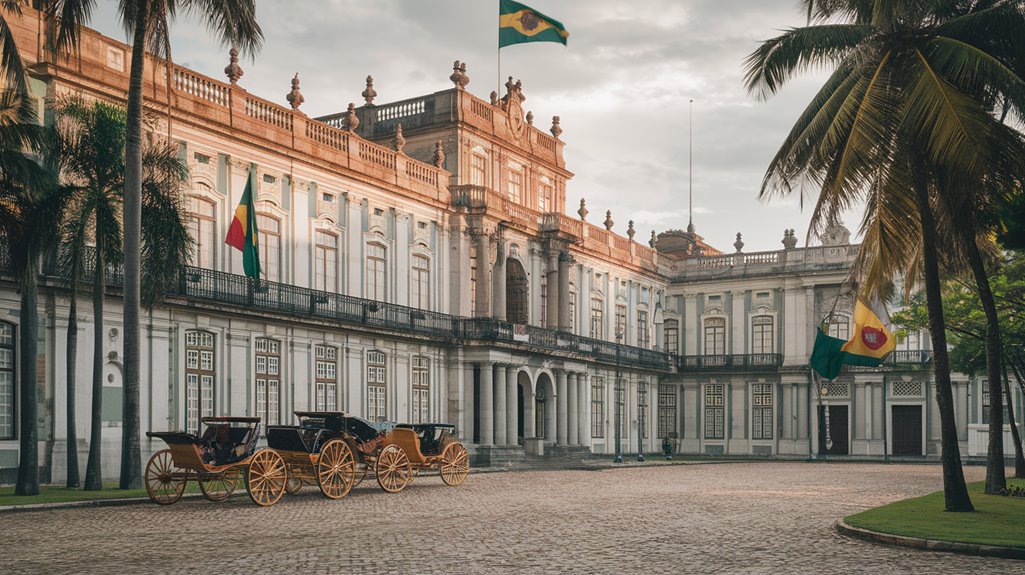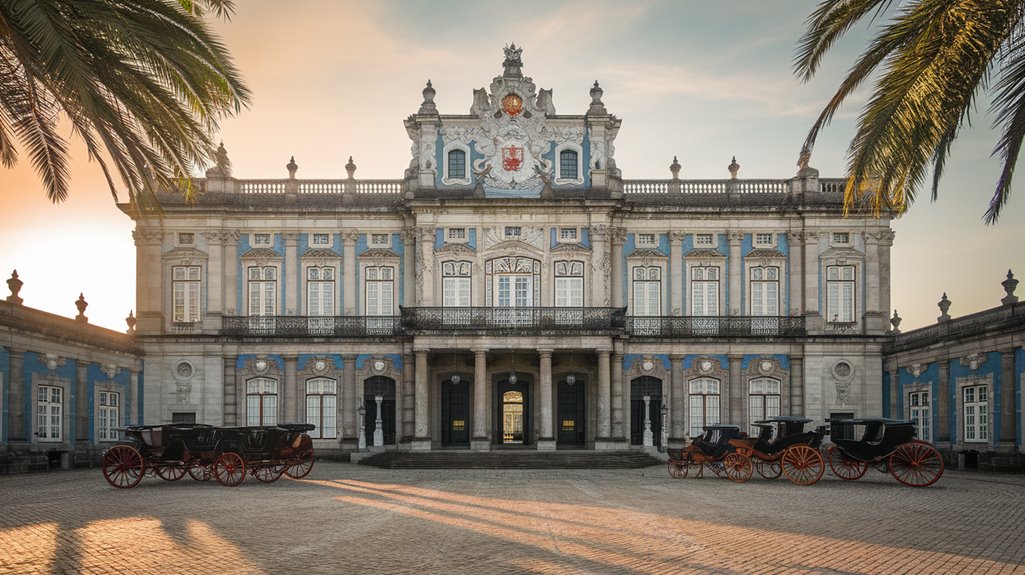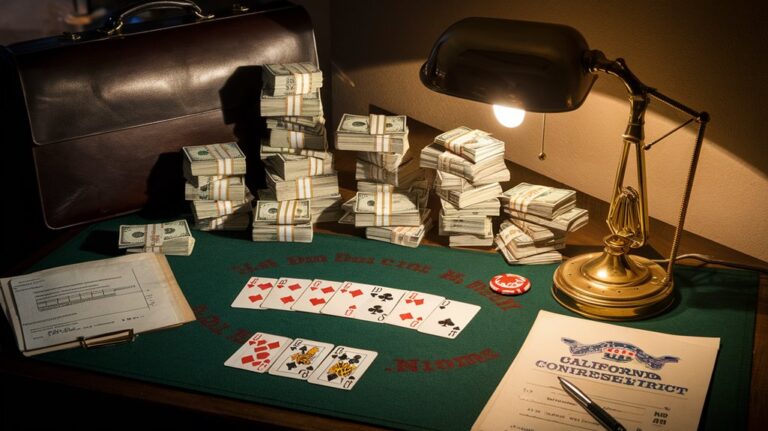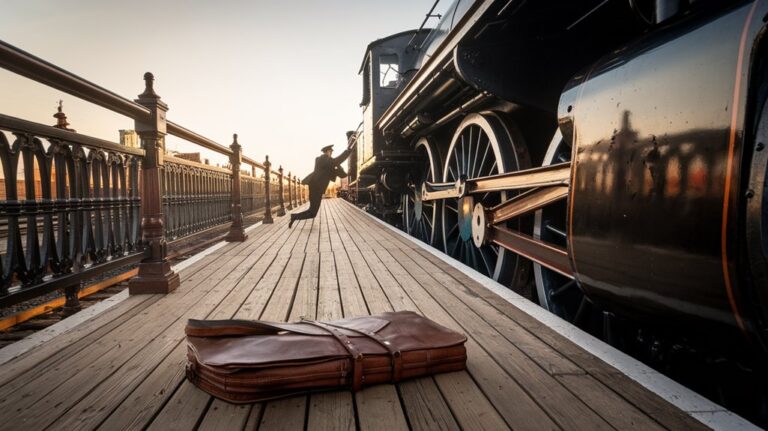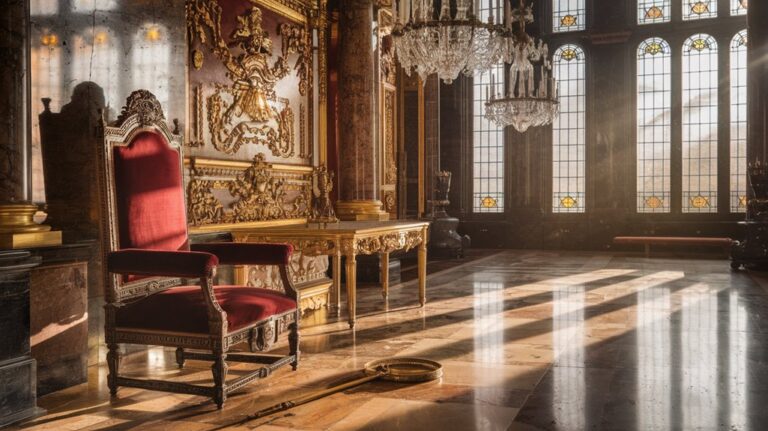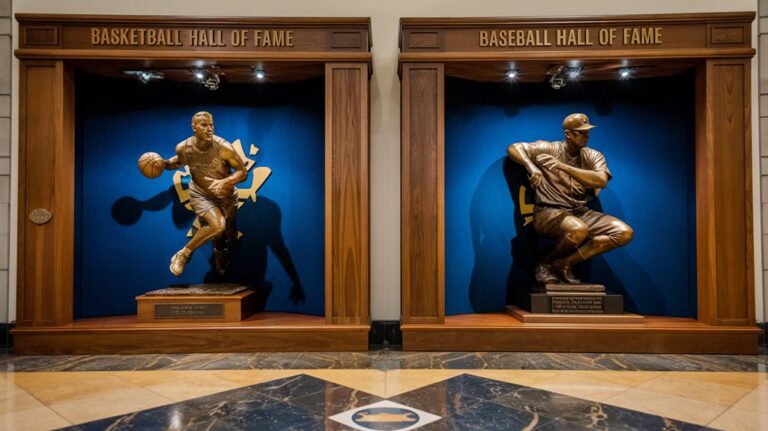Rio De Janeiro Once Served as Portugal’S Capital
Like a crown jewel plucked from Europe and replanted in tropical soil, Rio de Janeiro's stint as Portugal's capital stands as one of history's most fascinating power shifts. You'll find it hard to believe that Napoleon's threat to Portugal sparked such an unprecedented move – the first time a European power had relocated its throne to a colony. This thirteen-year period didn't just reshape Rio; it set the stage for a transformation that would forever alter the destiny of both nations.
The Royal Court's Historic Move to Brazil
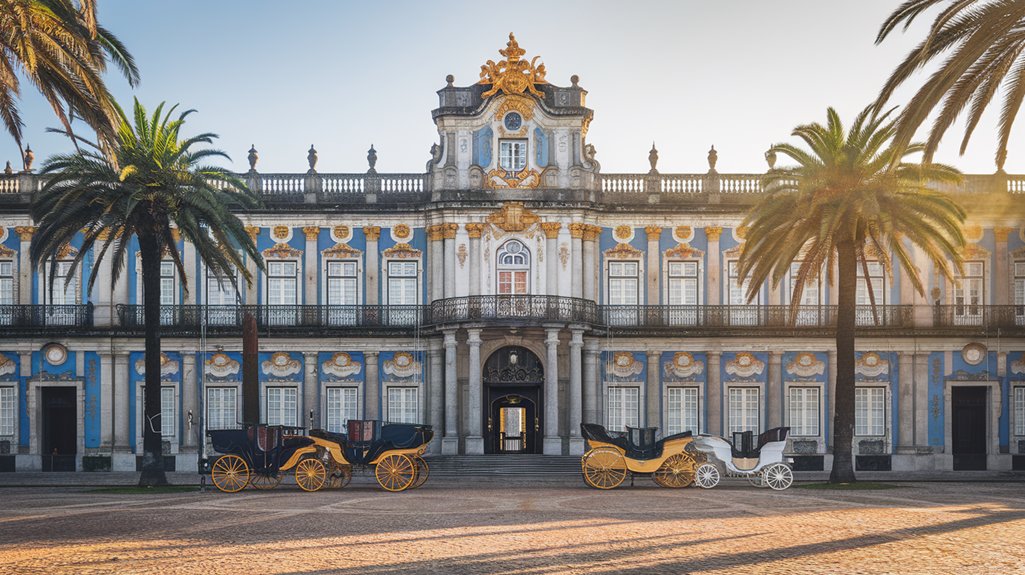
When Napoleon's forces threatened to invade Portugal in 1807, the Portuguese royal court made an unprecedented decision to relocate their entire government to Brazil.
You might find it remarkable that this court relocation involved over 10,000 people, including Queen Maria I, Prince Regent John, and countless courtiers and officials who sailed across the Atlantic to establish their new base in Rio de Janeiro.
This bold move, lasting 13 years, transformed Brazil from a mere colony into the heart of the Portuguese empire.
The royal influence extended far beyond politics, as the court's presence attracted European intellectuals, artists, and scientists to Rio.
This historic transfer laid the foundation for Brazil's future independence and marked the first time a European monarch had ruled from the Americas. The move brought significant infrastructure advancements to Brazil, including improvements in education and the arts.
The establishment of the Royal Press in Rio became crucial for publishing official documents and spreading new political-economic ideas throughout the empire.
Rio's Transformation Into a European Capital
As the Portuguese royal court settled into Rio de Janeiro in 1808, the colonial city rapidly transformed into a sophisticated European capital under Prince Regent Dom João's direction.
You'd have witnessed an unprecedented fusion of European influence with South American culture as the city evolved into the heart of the Portuguese Empire.
The city maintained its role as Brazil's primary seat of power until 1960 when Brasilia became the new capital.
Here's what made Rio's transformation remarkable:
- Dom João established essential institutions like the Bank of Brazil and Supreme Court, bringing European governance to the Americas.
- The city's imperial architecture flourished with grand palaces and boulevards to accommodate the royal court.
- Rio gained equal status to Portugal within the United Kingdom of Portugal, Brazil, and the Algarves.
- The city became a major financial hub, attracting European nobility and merchants while expanding its infrastructure.
The royal family's arrival was prompted by Napoleon's invasion of Portugal, forcing them to seek refuge across the Atlantic.
Legacy of Portuguese Rule in Rio De Janeiro
The architectural fingerprints of Portuguese rule remain deeply embedded in Rio de Janeiro's historic landscape.
You'll find classical Portuguese colonial architecture throughout the city, characterized by symmetrical designs, box-like structures, and lime-plastered facades. These buildings, with their alcoves and recessed windows, reflect the strong influence of European Portuguese traditions. Buildings commonly featured stone and mortar construction during this period.
As Rio became the center of Italianate court style in the 18th century, the city's architecture adopted the Pombalian style similar to Lisbon's. During the Napoleonic Wars, the city gained unprecedented significance as it became the seat of Portuguese royalty.
Today, the historical preservation of these buildings serves as a reflection of Rio's unique position as the former colonial and imperial capital. UNESCO has recognized this architectural legacy, which forms part of the broader Lusitanian tradition spanning Portuguese territories.
You can still witness this enduring impact in Rio's historic districts, where colonial architecture continues shaping Brazilian identity.
Cultural and Economic Growth Under Portuguese Administration
Following Dom João's establishment of Rio de Janeiro as Portugal's capital, the city underwent dramatic cultural and economic transformation.
You'll find that cultural institutions flourished as the Portuguese monarch established a Supreme Court, Royal Mint, and the Bank of Brazil, while economic initiatives turned the city into a bustling trade center for gold and diamonds from Minas Gerais.
- The influx of Portuguese nobility and intellectuals elevated Rio's cultural sophistication through new schools and libraries.
- Coffee plantations and mining activities boosted the city's economic prominence.
- Urban reforms modernized the city with new avenues and improved infrastructure.
- The development of distinct residential areas, like São Cristóvão and Outeiro da Glória, accommodated the growing population of merchants and bankers.
The city's transformation was further accelerated by railway line construction that enabled rapid urban expansion and population growth.
This vibrant development continued until 1960 when Brasília became capital, marking the end of Rio's role as the nation's administrative center.

